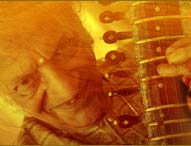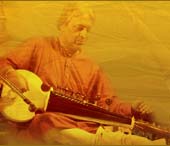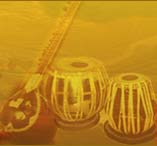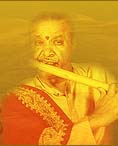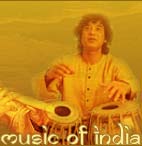Every human being gets affiliated to music as music describes the expression of heart. Music instruments are used to generate music and are moderated by a musician so as to get desired audio effects. They play an extremely important role in the field of music and it's always a different experience to play any musical instrument. Most of these instruments are used in Hindustani classical music that belongs to the North, while some are used in Carnatic music that belongs to the South India. The Indian musical instruments are of various types like stringed instruments, percussion instruments and wind-blown instruments. The music created by the instruments when played is unconditionally harmonious and musical. It relaxes the mind and the senses to a large extent. Read below to learn more about the various Indian musical instruments that are used by famous singers and performers.
Flute
Belonging to the woodwind family, flute is a wind instrument that produces sound from the flow of air across an opening. The person who plays the flute is known as a flautist or a flutist. To be louder, a flute must use a larger resonator, a larger air stream, or increased air stream velocity. A flute's volume can generally be increased by making its resonator and tone holes larger.
Tambura
It is a long necked stringed instrument and resembles Sitar when it comes to body shape. It is known as the Tanpura in North India and has four or five wire strings which are plucked one after another in a regular pattern to create a harmonic resonance on the basic note. The name tambura is probably derived from tana, referring to a musical phrase, and pura which means "full" or "complete". Both in its musical function and how it works, the tambura is unique in many ways.
Veena
It is the most popular musical instrument of South India, popularly known as the Saraswati Veena. It is a plucked string instrument that is designed and used to accompany Carnatic music. There are several variations of the veena, which in its South Indian form is a member of the lute family. One who plays the veena is referred to as a vainika.
Violin
The history of violin does not originate in India as it emerged in its current form in Italy during the 16th century. It was imported from the West and was used with south Indian classical music for the first time during the 18th century.
Tabla
It is an extremely popular Indian percussion instrument which is used in Hindustani Classical Music along with popular and devotional music. An Indian drumming instrument, the tabla dates back to the times of Persian Muslims.
Sitar
Sitar played a significant role in introducing western audiences to Indian classical music. It is categorized as a chordophone in the lute family. The sound of Sitar evokes thoughts and feelings of the sub-continent. It is a plucked string instrument predominantly used in Hindustani Classical Music.
Shehnai
Shehnai comes in the category of aero phonic instruments and is an extremely popular musical instrument in India. Shehnai is believed to bring good luck which makes it an important instrument to be played in the North Indian marriages and procession. It is a tube-like instrument that gradually widens towards its lower end.
Nagaswaram
Nagaswaram, also known as Nadaswaram, is considered to be one of the most ancient and unique musical instruments of Tamil Nadu. It is extremely appropriate to call this instrument a rare combination of music and divinity, because of its consideration as a very auspicious instrument and is found at temples and at weddings.
Sarod
The Sarod is amongst the famous Indian classical musical instruments. It is a stringed musical instrument. It is said that the main foundation of the Sarod seems to be the Rebab, a similar instrument that is said to have invented in Afghanistan and Kashmir. It is also assumed that the Sarod is truly like a bass Rebab.
Sarangi
Sarangi is a bowed stringed instrument and representative of India. The word 'Sarangi' has been derived from two Hindi words, 'Sau', which means hundred and 'Rang', which means color. It is called as Sarangi because the sound of this musical instrument is very pleasing and communicative. It also indicates a varied range of musical forms.
Santoor
The santoor is a trapezoid-shaped musical instrument. Santoor is usually made of walnut, with numerous strings and is said to be related to the shata-tantri veena of earlier times. A lightweight wooden hammer, used to play the santoor, is known as Mezrab. To play the Santoor, these mallets (mezrab) are held between the index and middle fingers.
Mridanga
It is one of the most important instruments in South India that provides rhythm to Carnatic music performances. Mridangam is a classical percussion instrument and is also known by the name of mridanga, mridangam, mrudangam and mrithangam.
Gettuvadyam
Gottuvadhyam is also known as gottuvadyam, chitra veena, chitraveena, chitra vina, chitravina, or mahanataka vina. It is a very rare instrument which is played in Southern part of India. Gottuvadhyam is 2-3 feet long and is like a hammered lute. Much like tambura, it is supported at the neck and has four strings. Sometimes, it is used as the secondary instrument accompanying Mridangam.
Chenda
Cylindrical in shape, Chenda is an extremely popular instrument in Kerala and some parts of Karnataka as well. It is a percussion instrument and is also called Chende in Karnataka. It usually accompanies Hindu religious art forms of Kerala. Chenda is used as accompaniment for Kathakali and Koodiyattam dances and rituals in Kerala.
